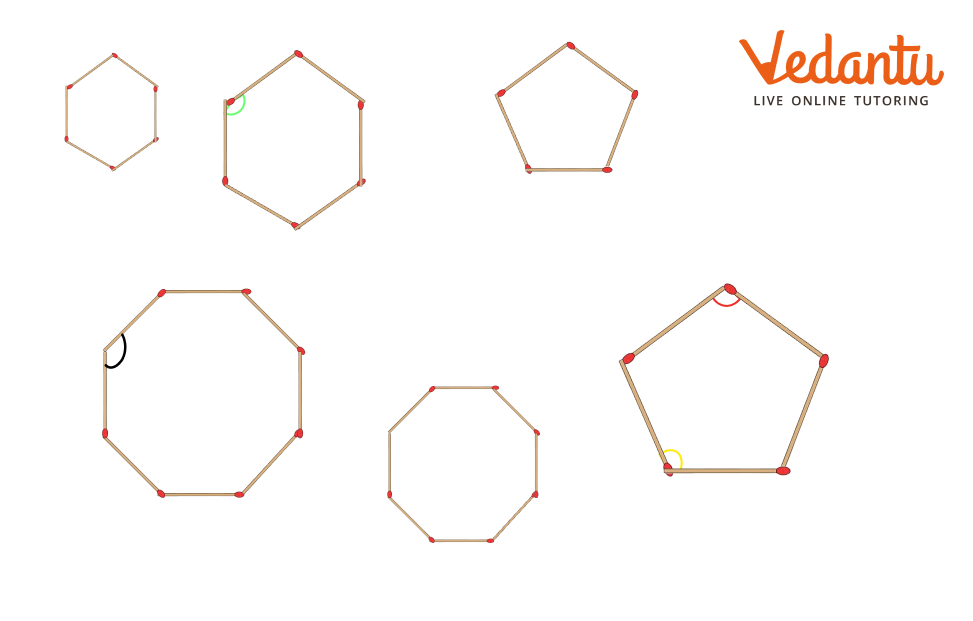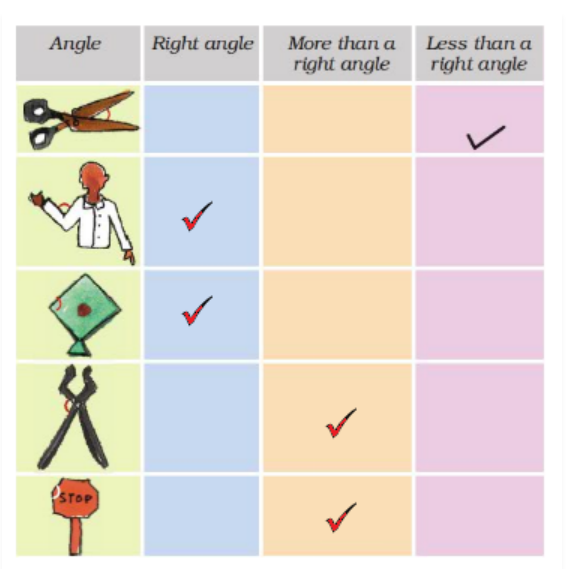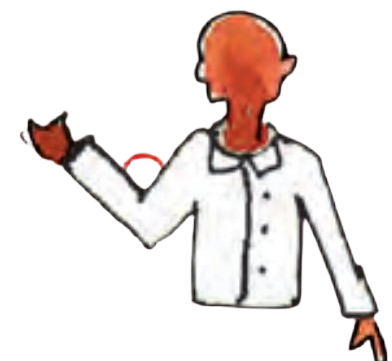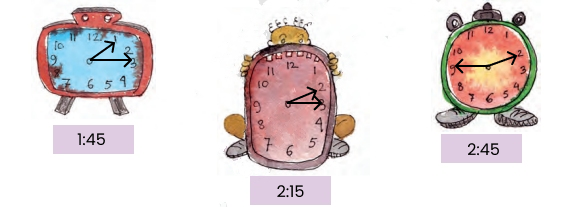Shapes And Angles - Exercise-wise Questions and Answers For Class 5 Maths - Free PDF Download
FAQs on NCERT Solutions For Class 5 Maths Chapter 2 Shapes And Angles - 2025-26
1. What concepts are covered in the NCERT Solutions for Class 5 Maths Chapter 2 "Shapes and Angles"?
The NCERT Solutions for Class 5 Maths Chapter 2 cover identification and properties of basic geometric shapes, understanding and measuring angles (acute, obtuse, right), differentiating between open and closed shapes, and real-world applications of shapes and angles as per CBSE 2025–26 guidelines.
2. How do the NCERT Solutions for Class 5 Maths Chapter 2 help in solving geometry problems?
The stepwise NCERT Solutions teach students how to identify different types of angles, recognize shapes based on properties such as sides and vertices, and apply these concepts to solve basic as well as application-based geometry problems aligned with the CBSE 2025–26 exam pattern.
3. What is the method to classify angles in the Class 5 Maths Chapter 2 NCERT Solutions?
Angles are classified in the NCERT Solutions based on their measure:
- Acute angle: Less than 90°
- Right angle: Exactly 90°
- Obtuse angle: More than 90° but less than 180°
4. Can I use these Class 5 Maths NCERT Solutions for self-study, or do I need guidance from a teacher?
Yes, the NCERT Solutions for Class 5 Maths Chapter 2 are written in simple language, making them suitable for self-study. Students can follow the step-by-step answers independently and clarify doubts as per the structured CBSE methodology.
5. What common mistakes should be avoided while solving shapes and angles questions in Class 5 Maths?
Students often confuse right angles with other types, miscount sides or vertices, or misidentify closed versus open figures. Carefully reading each question and applying the CBSE-recommended classification methods minimizes such mistakes in the exam.
6. How do the NCERT Solutions for Class 5 Maths Chapter 2 explain the real-life use of shapes and angles?
The solutions include examples linking geometry to daily life, such as identifying angles in clocks, architecture, playground equipment, and household objects, helping students see the practical relevance of shapes and angles.
7. How can measuring angles using a protractor be practiced with these NCERT Solutions?
Students are encouraged to practice drawing and measuring angles with a protractor as shown in the stepwise solution explanations, reinforcing correct measurement skills in line with the CBSE Class 5 Maths curriculum.
8. In what way do the solutions highlight differences between shapes with the same number of sides?
The solutions point out that even if shapes have the same number of sides, differences in angle measures can result in entirely distinct shapes (e.g., two hexagons with different angle measures), clarifying a frequent student misconception.
9. What strategies do the NCERT Solutions suggest for identifying similar and different angles in a shape?
The recommended strategy is to visually compare and mark angles of the same size and color, then verify using a protractor or geometric reasoning, as per the solution steps. This helps in systematic classification during the exam.
10. Are activities and practical questions included in Class 5 Maths Chapter 2 NCERT Solutions for enhanced understanding?
Yes, interactive activities such as making shapes with matchsticks, drawing angles, and investigating time on clocks are integrated into the NCERT Solutions, supporting hands-on learning according to the latest CBSE guidelines.
11. What should a student do if they get a different answer than in the NCERT Solutions for Class 5 Maths Chapter 2?
Students should carefully re-examine their steps, check geometric definitions and measurement accuracy, and reapply the CBSE-recommended method shown in the solution. Learning from these differences enhances conceptual clarity.
12. Why is mastering "Shapes and Angles" in Class 5 Maths important for future classes?
Understanding shapes and angles builds the foundation for advanced geometry in later classes. Mastering these concepts ensures students can tackle tougher math problems in higher grades, as required by the CBSE curriculum.
13. How are sides, vertices, and symmetry addressed in the NCERT Solutions for this chapter?
The solutions include step-by-step explanations to count sides, vertices, and identify lines of symmetry, enabling students to accurately describe shape properties as per CBSE standards.
14. What should students focus on in Class 5 Maths Chapter 2 to score well in CBSE exams?
Students should focus on identifying and classifying different angles, understanding properties of 2D shapes, accurately drawing geometric figures, and applying practical reasoning to real-life scenarios, as practiced in the NCERT Solutions for Class 5 Maths Chapter 2.
15. How do the NCERT Solutions for Class 5 Maths Chapter 2 support students in building problem-solving skills?
These solutions encourage analytical thinking by breaking down each problem into clear, logical steps and explaining the reasoning behind each answer, fostering strong foundational problem-solving skills in accordance with CBSE 2025–26 requirements.

























































